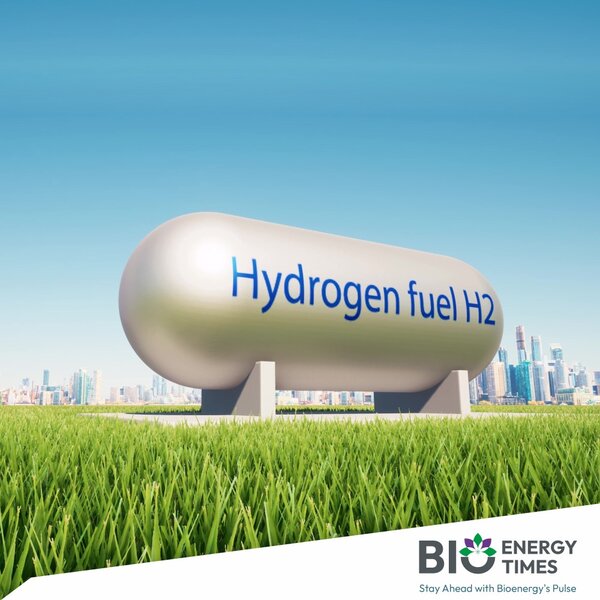New Delhi: In the rapidly evolving landscape of low-carbon hydrogen and ammonia markets, the pursuit of pricing transparency is gaining momentum, according to an analysis by S&P Global Commodity Insights.
The growing recognition among market participants that access to pricing information is crucial for securing competitive offtake agreements and advancing projects has led to an increase in pricing visibility worldwide.
Data from S&P Global reveals significant progress towards price transparency in both low-carbon ammonia and hydrogen markets.
Market-based indications for low-carbon ammonia have risen by 15 per cent over the past year, while low-carbon hydrogen has seen a staggering 51 per cent increase.
These figures, observed through April 26, signify a 42 per cent overall rise year-over-year, underlining the industry’s strides towards transparency.
The analysis forecasts substantial growth in global hydrogen production volumes, from 97 million metric tons in 2023 to 120 million metric tons in 2030, and a remarkable 265 million metric tons in 2050, according to S&P Global’s Clean Energy Technology Analytics Market outlook.
Traditionally, the hydrogen market relied on long-term infrastructure projects and undisclosed supply contracts structured before the final investment decision.
These personalized contracts, although instrumental in securing financing and managing volatility, lacked transparency, making it difficult for new entrants to make informed decisions.
However, the emergence of the low-carbon hydrogen market has led to a surge in global investments and transparent supply deals.
For instance, agreements like the one between Norwegian fertilizer company Yara and ACME Cleantech for the supply of renewable ammonia showcase the shift towards transparency and competition.
Additionally, auctions and tenders for low-carbon hydrogen and ammonia, such as TotalEnergies’ tender for green hydrogen into Europe, are becoming more common, supporting project developers and facilitating competitively priced contracts.
Pricing information for renewable-derived ammonia has evolved from standard contract structures to price ranges varying across regions based on support schemes, renewable energy portfolios, mandates, and technologies.
In Asia, willingness to pay (WTP) ranges from USD 550- USD 650 per metric ton for 15-20 year contracts, while in Europe, it ranges from USD 600- USD 1,000 per metric ton for 10-15 year contracts.
Contract tenures are tied to plant lifetime and debt repayment, with shorter contracts holding a premium.
However, securing modest offtake agreements with shared project risks at competitive prices remains challenging, particularly in Asia where buyers face difficulties, according to sources.
Platts model-based assessments for green ammonia reflect competitive prices for Europe and Asia, yet above some long-term contract offers, indicating fluctuations due to regulatory differences, renewable power pricing, and freight rates.
India has been actively promoting the transition to green hydrogen through various initiatives.
Under the National Green Hydrogen Mission, the government has set out strategic interventions including financial incentives, pilot projects, and the establishment of green hydrogen hubs.
Pilot projects focusing on the use of green hydrogen in the transport sector have been initiated, with an outlay of Rs 496 crores till 2025-26.
These projects aim to develop technologies for buses, trucks, and 4-wheelers powered by green hydrogen, along with supporting infrastructure such as hydrogen refuelling stations.
The guidelines issued by the Ministry of New & Renewable Energy (MNRE) emphasize the importance of developing a robust green hydrogen ecosystem, aiming to reduce carbon emissions in the transport sector and establish India as a leader in clean energy.
The transition towards price transparency in hydrogen markets is indicative of the sector’s maturation and growing global interest in low-carbon alternatives.
As India ramps up efforts to transition towards a greener energy future, the government’s ambitious Green Hydrogen Mission is set to revolutionize the country’s energy landscape.
With strategic interventions and substantial investments, India aims to create a robust ecosystem for green hydrogen production and utilization, both domestically and internationally.
The mission will open doors for export opportunities through supportive policies and strategic partnerships, leveraging India’s potential as a key player in the global green energy market.
At home, the government will mandate a minimum share of consumption of green hydrogen and its derivatives, such as green ammonia and methanol, by designated consumers.
The trajectory of this minimum share will be determined by the Empowered Group, ensuring a gradual but significant shift towards green energy consumption within the country.
To drive demand aggregation and procurement, India will undertake competitive bidding for green hydrogen and green ammonia.
This approach aims to foster competition, driving down prices and accelerating the adoption of green energy solutions.
Moreover, a robust certification framework will be developed by the Ministry of New & Renewable Energy (MNRE) to ensure that green hydrogen and its derivatives are certified as being produced from renewable energy sources, instilling confidence in their environmental credentials.
The Green Hydrogen Mission will kickstart with two distinct financial incentive mechanisms, with a substantial outlay of Rs 17,490 crore up to 2029-30.
These incentives will focus on manufacturing electrolysers and promoting the production of green hydrogen, catalyzing technological advancements and market growth.
As the mission progresses, specific incentive schemes and programs will evolve to adapt to market dynamics and technological advancements.
To guarantee the quality and performance of equipment used in green hydrogen projects, participation in competitive bidding will be contingent upon utilizing government-approved equipment meeting specified quality and performance criteria.
India’s green hydrogen journey will be supported by pilot projects across various sectors, including low-carbon steel, mobility, shipping, and decentralized energy applications.
With a total outlay of Rs 1,066 crore up to 2029-30, these pilot projects will demonstrate the viability and scalability of green hydrogen technologies across diverse applications.
Moreover, the Mission will identify and develop regions capable of supporting large-scale production and utilization of hydrogen as Green Hydrogen Hubs.
With an initial outlay of Rs 400 crore up to 2025-26, necessary infrastructure development for these hubs will be supported, laying the foundation for India’s leadership in green hydrogen production and utilization.
(With inputs from ANI)















